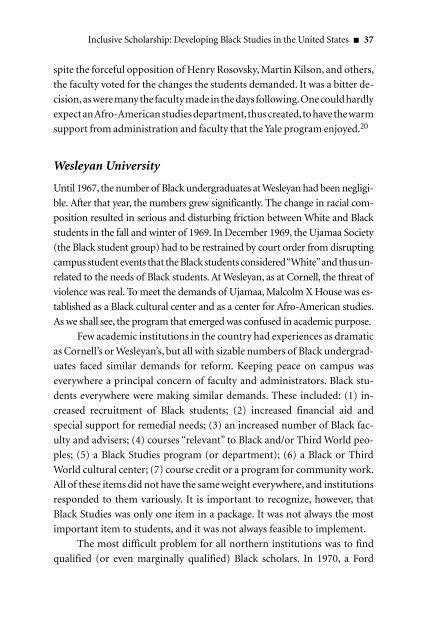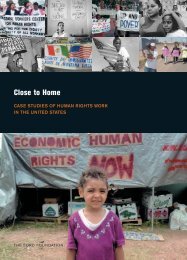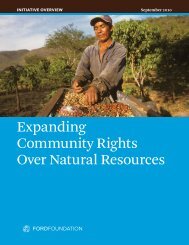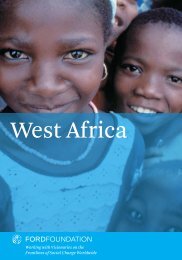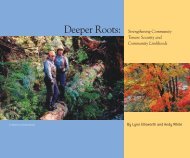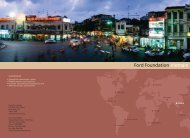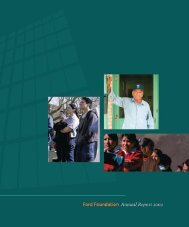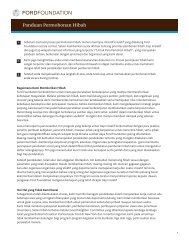Inclusive Scholarship: Developing Black Studies - Ford Foundation
Inclusive Scholarship: Developing Black Studies - Ford Foundation
Inclusive Scholarship: Developing Black Studies - Ford Foundation
Create successful ePaper yourself
Turn your PDF publications into a flip-book with our unique Google optimized e-Paper software.
<strong>Inclusive</strong> <strong>Scholarship</strong>: <strong>Developing</strong> <strong>Black</strong> <strong>Studies</strong> in the United States 37<br />
spite the forceful opposition of Henry Rosovsky, Martin Kilson, and others,<br />
the faculty voted for the changes the students demanded. It was a bitter decision,asweremanythefacultymadeinthedaysfollowing.Onecouldhardly<br />
expectanAfro-Americanstudiesdepartment,thuscreated,tohavethewarm<br />
support from administration and faculty that the Yale program enjoyed. 20<br />
Wesleyan University<br />
Until 1967, the number of <strong>Black</strong> undergraduates at Wesleyan had been negligible.<br />
After that year, the numbers grew significantly. The change in racial composition<br />
resulted in serious and disturbing friction between White and <strong>Black</strong><br />
students in the fall and winter of 1969. In December 1969, the Ujamaa Society<br />
(the <strong>Black</strong> student group) had to be restrained by court order from disrupting<br />
campus student events that the <strong>Black</strong> students considered“White”and thus unrelated<br />
to the needs of <strong>Black</strong> students. At Wesleyan, as at Cornell, the threat of<br />
violence was real. To meet the demands of Ujamaa, Malcolm X House was established<br />
as a <strong>Black</strong> cultural center and as a center for Afro-American studies.<br />
As we shall see, the program that emerged was confused in academic purpose.<br />
Few academic institutions in the country had experiences as dramatic<br />
as Cornell’s or Wesleyan’s, but all with sizable numbers of <strong>Black</strong> undergraduates<br />
faced similar demands for reform. Keeping peace on campus was<br />
everywhere a principal concern of faculty and administrators. <strong>Black</strong> students<br />
everywhere were making similar demands. These included: (1) increased<br />
recruitment of <strong>Black</strong> students; (2) increased financial aid and<br />
special support for remedial needs; (3) an increased number of <strong>Black</strong> faculty<br />
and advisers; (4) courses “relevant” to <strong>Black</strong> and/or Third World peoples;<br />
(5) a <strong>Black</strong> <strong>Studies</strong> program (or department); (6) a <strong>Black</strong> or Third<br />
World cultural center; (7) course credit or a program for community work.<br />
All of these items did not have the same weight everywhere, and institutions<br />
responded to them variously. It is important to recognize, however, that<br />
<strong>Black</strong> <strong>Studies</strong> was only one item in a package. It was not always the most<br />
important item to students, and it was not always feasible to implement.<br />
The most difficult problem for all northern institutions was to find<br />
qualified (or even marginally qualified) <strong>Black</strong> scholars. In 1970, a <strong>Ford</strong>


